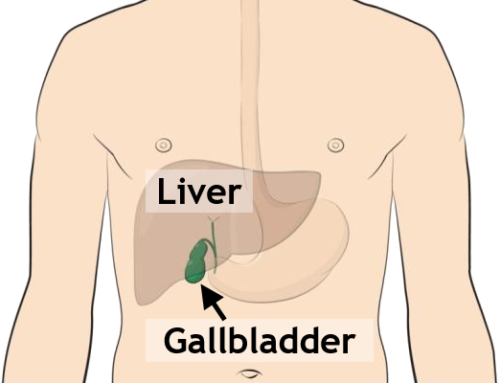The Gallbladder – Function, Anatomy, and Disease States
The gallbladder is a small pear-shaped organ located in the right upper quadrant of the abdomen. Its function is to store, concentrate, and secrete bile in response to eating (particularly a fatty meal).
The likelihood of gallbladder disease may be increased with a family history, pregnancy, race (Native Americans), and perhaps with equated serum cholesterol.
Though gallbladder disease is most common in the middle age group, it also can be seen in children and in the aged. Fall General Surgery has removed the gallbladder in patients as young as age 12 and as old as age 90.
Gallbladder disease may present itself in many different ways – cholecystitis, biliary colic, pancreatitis, jaundice, and even bowel obstruction.
Acute cholecystitis is an infection of the gallbladder. Common initial treatment includes hospitalization and IV antibiotics. If the patient is diabetic, the infectious process may occur rapidly and severely. If the infection can be eliminated with antibiotics, definitive surgery is usually recommended in six weeks. If the infection cannot be controlled, the gallbladder may be drained with removal planned for six weeks later.
Biliary colic commonly presents with intermittent upper abdominal pain but without evidence of infection. In this situation, surgery may be scheduled within 24-48 hours from the attack’s onset. Most often this can be done laparoscopically with discharge within 12-24 hours.
When gallstones become “stuck” in a duct (pipe) they may block the flow of bile or pancreatic juices resulting in obstructive jaundice or pancreatitis. Either condition can be life-threatening.
Rarely, after several years of stone disease, a large gallstone may form and put pressure on the gallbladder wall. This thins the wall and ultimately the stone perforates the gallbladder and enters the small bowel creating a bowel obstruction.
Ninety percent of gallbladder surgeries can be done using the laparoscope. Four small incisions are used, the largest of which is one to two inches. Hospital discharge usually is within 24 hours from the time of surgery.


